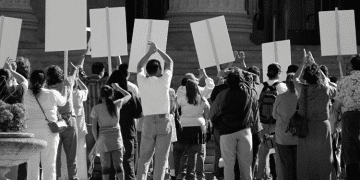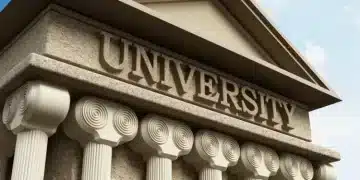Free Higher Education in South Africa: The Hidden Costs of Universal Access
The Path to Fee-Free Education in South Africa
Historical Context of Inequality in South African Education System
South Africa’s education system has long been plagued by deep-seated inequalities.
During Apartheid, the government enforced policies that denied quality education to non-white citizens, leaving a legacy of education disparity that persists today.
Even after the fall of Apartheid, many young people struggled to access and succeed in primary, secondary, and tertiary education due to economic and societal barriers.
The #FeesMustFall Movement and Student Protests of 2015-2017
The inequality in access to higher education came to a head between 2015 and 2017 with the #FeesMustFall movement.
Thousands of students across the country organized protests against rising tuition fees, which they argued were inevitable barriers to education for economically disadvantaged students.
These protests escalated to include demonstrations against the general quality and accessibility of education in South Africa.
The protests became increasingly vocal and sometimes violent, causing significant damage to university infrastructure.
The intensity and scale of the protests attracted attention from academics, public and private stakeholders, and the media.
This nationwide mobilization highlighted the urgency of addressing the crisis in higher education and prompted a broader conversation about educational equity.

Zuma’s Promise of Free Education for 90% of Eligible Students
Amid the tension and unrest of the protests, former President Jacob Zuma made a groundbreaking announcement at the end of 2017.
He promised to provide free tertiary education to 90% of academically eligible students whose families fell within low-income brackets, significantly expanding access to higher education for thousands of South African youth.
This bold promise set the stage for significant policy changes.
Public student aid programs, like the National Student Financial Aid Scheme (NSFAS), committed to increasing subsidies to support both low-income students and the ‘missing middle’—students whose family incomes were slightly above the threshold for financial aid but who still struggled to afford tuition fees.
The implementation of free education in South Africa aims to address historical injustices and break the cycle of poverty.
As Chief Researcher Zama Mthombeni argues, better education enhances employability and opens doors to higher incomes, fostering socioeconomic mobility for entire families.
However, the ambitious plan also sparked debate and highlighted pressing concerns.
The massive financial investment required to sustain fee-free education poses challenges, with researchers from the Human Sciences Research Council (HSRC) emphasizing the need for a balance between expanded access and maintaining education quality.
The journey towards fully realizing this vision continues, with stakeholders grappling with the economic and social implications.
Next, we will delve into the current implementation and financial commitments that the South African government has made to uphold this promise.
Current Implementation and Financial Commitments
Following the massive #FeesMustFall protests between 2015 and 2017, the South African government took significant steps to subsidize tertiary education for low-income students.
Former President Jacob Zuma’s pledge to ensure free tertiary education for 90% of eligible students became a monumental measure to address historical inequities in the education system.
Let’s delve into the current implementation efforts and the financial commitments necessary for this ambitious undertaking.
Government’s Investment in Low-Income Students
The South African government has heavily invested in subsidizing tertiary education for students from low-income backgrounds.
These students come from households earning less than R350,000 per year.
The National Student Financial Aid Scheme (NSFAS) is pivotal in this process, channeling funds to cover tuition, accommodation, and other educational expenses.
The commitment is clear—ensure that financial barriers do not impede deserving students from accessing higher education.
NSFAS Funding and the ‘Missing Middle’
While NSFAS funding has been a significant lifeline for low-income students, the scheme has also extended its support to the ‘missing middle’.
These are students from families earning between R350,000 and R600,000 annually, who often fall through the cracks since they’re neither wealthy enough to pay for university nor poor enough to benefit from existing aid programs.
To address this, the Department of Higher Education and Training announced in 2024 that it would inject an additional R3.8 billion into NSFAS to support these middle-income students.
The Scale of Financial Investment
Implementing and maintaining fee-free education for a substantial portion of the population requires a colossal financial commitment.
The transition to free education has led to considerable expansions in the budgetary allocations for higher education.
Policymakers must balance this increased funding with the broader fiscal demands of the nation, which is already grappling with economic hardships and high national debt.
Quality vs Access Trade-off
While the aim to expand access to higher education is a critical move towards social equity, it brings to light the quality vs. access trade-off. The surge in university and college enrollments has put immense pressure on educational infrastructure.
Classrooms are overcrowded, and institutions are struggling with limited resources, which jeopardizes maintaining high educational standards.
Ensuring that expanded access doesn’t compromise the quality of education is a stark challenge that needs immediate and sustained attention.
Efforts to provide free tertiary education are well-intentioned and necessary, but the financial and logistical hurdles cannot be ignored.
As we continue our journey towards broader access, solutions to these challenges must be diligently sought.
The Quality vs Access Trade-off
Impact of Increased Enrollment on Educational Infrastructure
The South African government’s commitment to free higher education for the majority of eligible students has resulted in a dramatic increase in university enrollments.
While the initiative aims to correct historical disparities in educational access, the surge has exposed several cracks in the educational infrastructure.
Universities are grappling with overcrowded classrooms and limited facilities, straining to accommodate the escalating number of students without a corresponding increase in resources.
This situation has led to a less conducive learning environment, where students frequently find themselves in cramped lecture halls and inadequate housing, which can diminish the overall quality of education.
Challenges of Overcrowded Classrooms and Under-Resourced Institutions
Overcrowded classrooms are more than just a logistical issue; they have significant implications for both teaching and learning.
Instructors face challenges managing large groups, often resulting in the dilution of personalized attention and feedback.
Moreover, universities struggle with maintaining libraries, laboratories, and digital infrastructure that meet the needs of burgeoning student populations. Under-resourcing doesn’t end with the physical environment.
Academic staff are also overwhelmed, as the ratio of faculty to students widens, leading to burnout and reduced teaching efficacy.
Struggle to Maintain International Education Standards While Expanding Access
Achieving international education standards is a daunting task under the present circumstances.
As universities open their doors wider, it becomes more challenging to maintain rigorous academic curricula and support systems that measure up to global benchmarks.
The primary concern is whether South Africa can sustain high-quality education systems as it increases access.
The pursuit of balancing quantity with quality reveals a deeper problem: increased access may unintentionally compromise the education’s competitive edge on the international stage.
Addressing these challenges demands a strategic vision focused on coordinated investment in infrastructure, resources, and human capital.
As South Africa continues down this path, it must navigate these complexities to ensure both educational access and excellence are upheld.
Further exploration into the broader economic implications of this policy will highlight additional considerations.
| Economic Challenge | Description |
|---|---|
| 💰 Pressure on National Debt | The government’s financial commitments to provide fee-free education have led to rising national debt, putting economic stability at risk. Significant expenditures on infrastructure and operational costs are necessary to accommodate more students. |
| 📈 Potential Need for Tax Increases | To sustain the program, the government may need to increase taxes. However, higher taxes could reduce consumer spending power, worsening financial strain for households in an already high-unemployment environment. |
| 🏥 Impact on Other Public Sectors | Funding for free education may require reallocating resources from other sectors like healthcare. Diverting funds could affect essential services and undermine the overall well-being of the population. |
Unintended Consequences and Future Challenges
Creation of ‘University Degree Arms Race’
South Africa’s focus on providing fee-free higher education has generated a “university degree arms race.”
This phenomenon leads to an overemphasis on attaining university degrees while neglecting mid-level skills development.
The demand for degrees overshadows the importance of practical training and vocational education, which are vital to the economy.
This increased pressure to obtain degrees fails to address the high youth unemployment rate, as many graduates struggle to find jobs within their fields.
Consequently, the labor market becomes saturated with degree holders who do not possess the necessary skills for mid-level or technical positions.
The neglect of mid-level skills development can hinder economic growth by limiting the availability of skilled tradespeople, which are essential for various industries.
Diversion of Funds from Primary and Secondary Education
The significant financial investments required to maintain free tertiary education have inadvertently diverted funds from primary and secondary education. This diversion exacerbates existing inequalities within the education system.
Primary and secondary schools, especially those in disadvantaged areas, often struggle with inadequate resources, overcrowded classrooms, and insufficient infrastructure.
By prioritizing tertiary education, the government risks widening the gap between those who can access quality primary and secondary education and those who cannot.
Ensuring a solid foundation during these critical stages is essential for students to succeed in higher education and beyond.
Need for Systematic Research
Implementing fee-free higher education requires robust, ongoing research to evaluate its long-term sustainability and equity.
Policymakers need data-driven insights to understand and address the unintended consequences of this policy.
Systematic research can highlight areas where the policy may falter and provide recommendations for adjustments.
Ensuring sustainability involves continuously assessing the impact on national debt, economic stability, and the strains on other public sectors like healthcare.
Moreover, research can help identify ways to balance access to education with maintaining its quality.
Transition
Moving forward, it is crucial to address these unforeseen challenges to build a more balanced and inclusive education system.
Proper attention to these elements will pave the way for a sustainable future where education at all levels can thrive.





